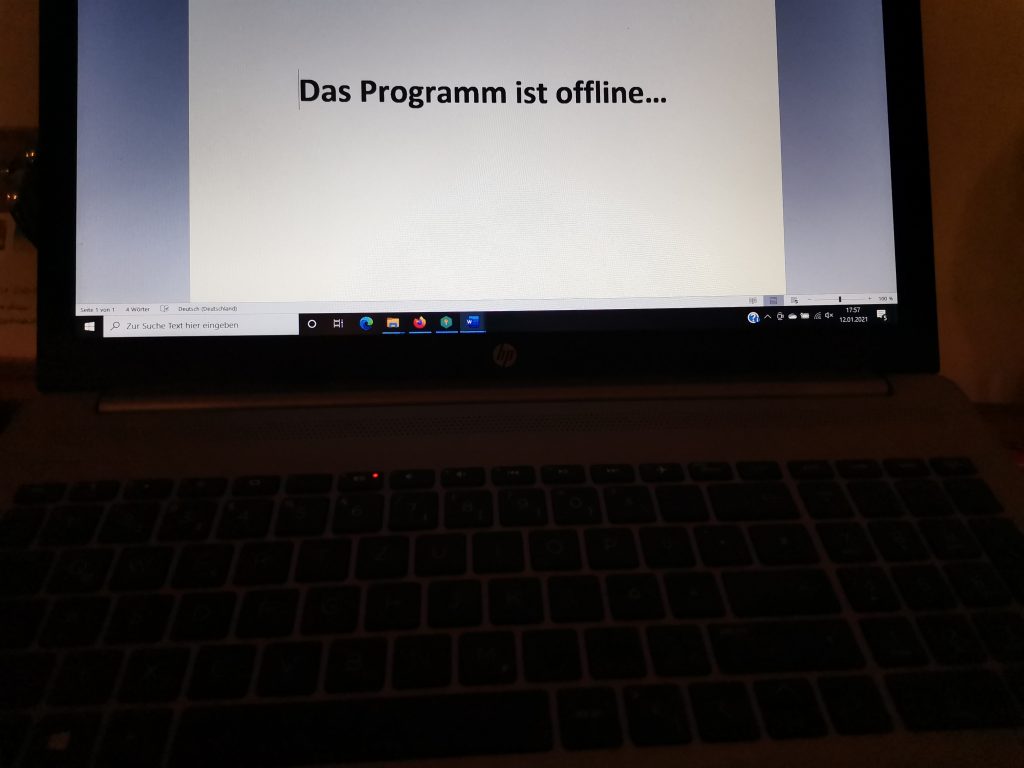It is snowing outside. It was frozen. The snow will stay. The children are standing by the window and are happy. They are about to build a snowman. But first it’s back to the desk. The weekly schedule needs to be processed properly. German is done, now it’s math.
Today is Tuesday. I had only written about homeschooling last week. In the text, I had made it our parents’ responsibility above all. We should be role models and approach home schooling with zeal and optimism. “Take the bull by the horns,” as the saying goes. I also wanted to write a sequel on homeschooling – but only in the coming week. But the material that accumulated in the first day and a half is already enough for a continuation.
My wife and I have prepared ourselves really well for Homeschooling 2.0. At the weekend we went jogging, the fridge is full. On Sunday evening we designed a crisp weekly schedule: the alarm clock rings at 6:30 a.m., a first coffee. We wake up the children at 7 a.m. At 7:30 am there is breakfast, the second and third coffee. At 8 o’clock we sit at the desk. The children are allowed to play for a while, then lessons begin at 8:30 a.m.
Theo is in 3rd grade, his sister Tina won’t start school until the summer, but she really wants to do schoolwork. So we got her a preschool notebook with various tasks that she is busy working on.
The teacher also did good preparatory work. She has put together a varied weekly schedule for her class, with both analog and digital tasks. Write, read, calculate, paint – with pen and paper as well as on the tablet. There is nothing to complain about.
She sent the material via the schul.cloud app. We parents have been communicating with her through this since the beginning of the school year. So far it has worked to a certain extent, but the first problems arose on Monday morning: The system seemed overloaded. It was always offline, not showing any messages or showing them late. The uncertainty among parents grew, because three video conferences with three students each were scheduled for Tuesday. The teacher meant it well: If the children can’t see each other at school, they should at least talk to each other digitally.
Describing the process that was needed to put these three chat groups together would be worth a separate contribution. It would go beyond the scope here. So just so much: As parents’ spokesman, two mothers and I finally put the groups together with the help of an online survey.
The first group should start on Tuesday at 9.30 a.m. The class teacher wanted to send a link that we should then use to dial in via schul.cloud. It was 9.30 a.m., then 9.32 a.m. and 9.33 a.m. Theo stood expectantly in front of the computer, looked forward to his friends and asked when it was going to start. I also stared at my cell phone with a pounding heart and not without skepticism. Nothing happened. It was 9.35 a.m.
Fortunately, we parents communicate with one another via a messenger service. It always works, even today. I wrote: “Eight children and one parent sit spellbound in front of the computer and wait. I have it right in front of my eyes. … “
Answer from a mother: “You are sooo right (smiley smiley face).”
“Exactly,” said another mother.
We kept waiting.
“As you can see, you don’t see anything,” I thought.
The first mother wrote – now without a smiley face – it was 9:40 am: “I hope it works in the next ten minutes. I have to go to work.”
I have now sent our children outside to build snowmen. I just had no more patience for Theo’s long-term question.
Then finally a message via the schul.cloud: The class teacher. “I’m sorry, but the program doesn’t send me a conference room and doesn’t tell me why. I assume the video conferencing tool is overloaded. What do we do? Wait or try again later? Perhaps then there are fewer users on the way. “
After a bit of back and forth, she suggested a video chat via Zoom. This is the platform that privacy advocates warned against during the first lockdown. I didn’t care. She wanted to set up the conference immediately and send the link. I waited and waited but got nothing. Strange. Suddenly the app showed me a message. The teacher had sent the link – twelve minutes ago.
I hurried to the computer and dialed in. “Ah, there is also … Theo’s father,” she said happily when the connection was established. I looked at her face and at that of seven curious children. I called Theo. Then the children could finally talk to each other. It was about Christmas presents, New Years Eve and firecrackers. I took a deep breath, went to the fridge and broke a piece of chocolate the size of a thumb from an XXL bar. As I said, everything was well prepared.
Shortly afterwards the children were again busy with the snowman in the garden. They rolled large snow globes across the lawn and had fun. I picked up the cell phone again and asked in the class chat to share the zoom link via Messenger in the future and told me about my experience with the late message.
“Welcome to Germany,” commented a mother sarcastically.
Then it was about the next chat. Nobody objected to Zoom. Somehow all parents felt the same: The main thing is that something works now. The second chat then ran smoothly.
I got myself a coffee and another piece of chocolate. A proud carrot-nosed snowman was now standing in the garden grinning at me.
“Welcome to Germany” – I thought about it. Schools across the country have had problems with learning programs since Monday – whether they are called Moodle, Mebis, or iServ. Some students were unable to work digitally at all or kept falling out of their chats.
I have a lot of understanding and little idea about technology. But even for me it was foreseeable that the number of hits on the learning programs would increase when the whole country is in homeschooling. In my opinion, those responsible let the matter go up against the wall – according to the motto: “It will go wrong”.
Who is to blame for this disaster, the providers who have not properly reinforced their servers or politicians who have exerted too little pressure, is open. But the losers are certain. These are the students who have to deal with annoyed, overwhelmed parents who, for their part, simply want to get through this time without harm. Despite all the appeals and protests, I can’t help but get the impression that children and families are somehow not as important in this society as other things. This is shown by the start of this homeschooling.
A muffled noise in the garden, I look out the window: the snowman has collapsed. The carrot nose is in the dirt.


